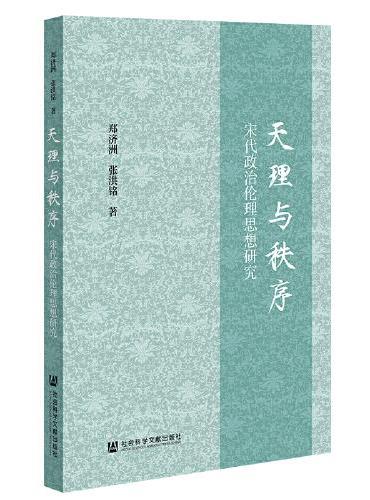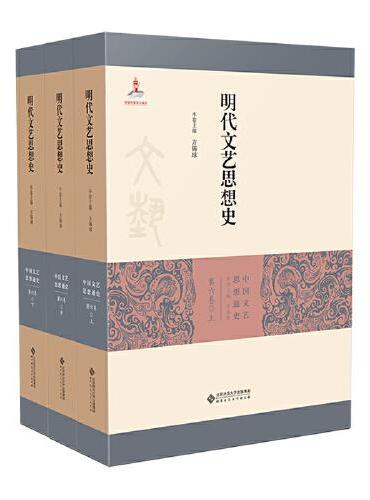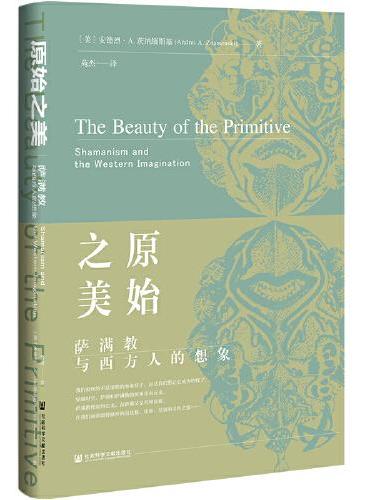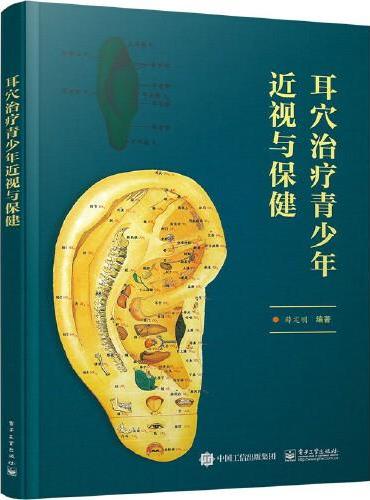新書推薦:

《
天理与秩序:宋代政治伦理思想研究
》
售價:NT$
549.0

《
怎么办?
》
售價:NT$
442.0

《
明代文艺思想史
》
售價:NT$
2688.0

《
原始之美:萨满教与西方人的想象
》
售價:NT$
717.0

《
宽窄说:烟草之书
》
售價:NT$
717.0

《
女人认知觉醒手册 共2册 做个情绪稳定活得通透的女人 任何时候都不要被情绪绑架 女人不能太单纯
》
售價:NT$
558.0

《
耳穴治疗青少年近视与保健
》
售價:NT$
274.0

《
《中国版画史》
》
售價:NT$
493.0
|
| 編輯推薦: |
|
格点场论是目前唯一得到广泛应用的量子场论的非微扰方法。他能够通过离散化和大规模的计算处理传统微扰方法不能处理的问题。目前,格点场论的研究正越来越体现出它的重要性。《格点量子色动力学导论英文影印版》作为这一领域的专著,内容系统而丰富,既注重第一性原理的清晰,又注重具体的计算方法的实用性,对格点场论的研究者会有很大的帮助。正在从事格点场论研究和有兴趣进入这一领域的读者不能错过这一杰作。
|
| 內容簡介: |
|
《格点量子色动力学导论英文影印版》讲述了格点场论在量子色动力学中的应用。本书首先讲述了格点路径积分,之后讲述了纯规范理论的格点化和数值模拟。然后,本书讲述了格点上的费米子、强子谱、手征对称性等内容。对于动力学费米子和重正化群也做了深入的探讨。最后,本书还讲述了对强子结构和温度、化学势的格点场论处理。本书适合量子场论和粒子物理领域的研究者和研究生阅读。
|
| 關於作者: |
|
加特林格(C. Gattringer),奥地利格拉茨大学教授。
|
| 目錄:
|
1 The path integral on the lattice. . . . . . . . . . . . . . . . . . . . . . . . . . . . 1
1.1 Hilbert space and propagation in Euclidean time . . . . . . . . . . . . 2
1.1.1 Hilbert spaces. . . . . . . . . . . . . . . . . . . . . . . . . . . . . . . . . . . . . 2
1.1.2 Remarks on Hilbert spaces in particle physics . . . . . . . . . 3
1.1.3 Euclidean correlators . . . . . . . . . . . . . . . . . . . . . . . . . . . . . . 4
1.2 The path integral for a quantum mechanical system. . . . . . . . . . 7
1.3 The path integral for a scalar field theory. . . . . . . . . . . . . . . . . . . 10
1.3.1 The Klein-Gordon field . . . . . . . . . . . . . . . . . . . . . . . . . . . . 10
1.3.2 Lattice regularization of the Klein-Gordon Hamiltonian 11
1.3.3 The Euclidean time transporter for the free case. . . . . . . 14
1.3.4 Treating the interaction term with the Trotter formula . 15
1.3.5 Path integral representation for the partition function. . 16
1.3.6 Including operators in the path integral . . . . . . . . . . . . . . 17
1.4 Quantization with the path integral. . . . . . . . . . . . . . . . . . . . . . . . 19
1.4.1 Different discretizations of the Euclidean action . . . . . . . 19
1.4.2 The path integral as a quantization prescription . . . . . . . 20
1.4.3 The relation to statistical mechanics . . . . . . . . . . . . . . . . . 22
References . . . . . . . . . . . . . . . . . . . . . . . . . . . . . . . . . . . . . . . . . . . . . . . . . . 23
2 QCD on the lattice - a first look. . . . . . . . . . . . . . . . . . . . . . . . . . . 25
2.1 The QCD action in the continuum . . . . . . . . . . . . . . . . . . . . . . . . . 25
2.1.1 Quark and gluon fields . . . . . . . . . . . . . . . . . . . . . . . . . . . . . 26
2.1.2 The fermionic part of the QCD action . . . . . . . . . . . . . . . 26
2.1.3 Gauge invariance of the fermion action . . . . . . . . . . . . . . . 28
2.1.4 The gluon action . . . . . . . . . . . . . . . . . . . . . . . . . . . . . . . . . . 29
2.1.5 Color components of the gauge field . . . . . . . . . . . . . . . . . 30
2.2 Naive discretization of fermions . . . . . . . . . . . . . . . . . . . . . . . . . . . 32
2.2.1 Discretization of free fermions. . . . . . . . . . . . . . . . . . . . . . . 32
2.2.2 Introduction of the gauge fields as link variables . . . . . . . 33
2.2.3 Relating the link variables to the continuum gauge fields 34
2.3 The Wilson gauge action . . . . . . . . . . . . . . . . . . . . . . . . . . . . . . . . . 36
2.3.1 Gauge-invariant objects built with link variables. . . . . . . 36
2.3.2 The gauge action . . . . . . . . . . . . . . . . . . . . . . . . . . . . . . . . . . 37
2.4 Formal expression for the QCD lattice path integral . . . . . . . . . 39
2.4.1 The QCD lattice path integral . . . . . . . . . . . . . . . . . . . . . . 39
References . . . . . . . . . . . . . . . . . . . . . . . . . . . . . . . . . . . . . . . . . . . . . . . . . . 41
3 Pure gauge theory on the lattice. . . . . . . . . . . . . . . . . . . . . . . . . . . 43
3.1 Haar measure . . . . . . . . . . . . . . . . . . . . . . . . . . . . . . . . . . . . . . . . . . . 44
3.1.1 Gauge field measure and gauge invariance . . . . . . . . . . . . 44
3.1.2 Group integration measure . . . . . . . . . . . . . . . . . . . . . . . . . 45
3.1.3 A few integrals for SU3 . . . . . . . . . . . . . . . . . . . . . . . . . . . 46
3.2 Gauge invariance and gauge fixing . . . . . . . . . . . . . . . . . . . . . . . . . 49
3.2.1 Maximal trees . . . . . . . . . . . . . . . . . . . . . . . . . . . . . . . . . . . . 49
3.2.2 Other gauges . . . . . . . . . . . . . . . . . . . . . . . . . . . . . . . . . . . . . 51
3.2.3 Gauge invariance of observables . . . . . . . . . . . . . . . . . . . . . 53
3.3 Wilson and Polyakov loops . . . . . . . . . . . . . . . . . . . . . . . . . . . . . . . 54
3.3.1 Definition of the Wilson loop . . . . . . . . . . . . . . . . . . . . . . . 54
3.3.2 Temporal gauge . . . . . . . . . . . . . . . . . . . . . . . . . . . . . . . . . . . 55
3.3.3 Physical interpretation of the Wilson loop . . . . . . . . . . . . 55
3.3.4 Wilson line and the quark-antiquark pair. . . . . . . . . . . . . 57
3.3.5 Polyakov loop. . . . . . . . . . . . . . . . . . . . . . . . . . . . . . . . . . . . . 57
3.4 The static quark potential . . . . . . . . . . . . . . . . . . . . . . . . . . . . . . . . 58
3.4.1 Strong coupling expansion of the Wilson loop . . . . . . . . . 59
3.4.2 The Coulomb part of the static quark potential . . . . . . . 62
3.4.3 Physical implications of the static QCD potential. . . . . . 63
3.5 Setting the scale with the static potential. . . . . . . . . . . . . . . . . . . 63
3.5.1 Discussion of numerical data for the static potential . . . 64
3.5.2 The Sommer parameter and the lattice spacing. . . . . . . . 65
3.5.3 Renormalization group and the running coupling . . . . . . 67
3.5.4 The true continuum limit. . . . . . . . . . . . . . . . . . . . . . . . . . . 69
3.6 Lattice gauge theory with other gauge groups . . . . . . . . . . . . . . . 69
References . . . . . . . . . . . . . . . . . . . . . . . . . . . . . . . . . . . . . . . . . . . . . . . . . . 70
4 Numerical simulation of pure gauge theory . . . . . . . . . . . . . . . . 73
4.1 The Monte Carlo method. . . . . . . . . . . . . . . . . . . . . . . . . . . . . . . . . 74
4.1.1 Simple sampling and importance sampling . . . . . . . . . . . . 74
4.1.2 Markov chains . . . . . . . . . . . . . . . . . . . . . . . . . . . . . . . . . . . . 75
4.1.3 Metropolis algorithm - general idea. . . . . . . . . . . . . . . . . . 78
4.1.4 Metropolis algorithm for Wilson''s gauge action. . . . . . . . 79
4.2 Implementation of Monte Carlo algorithms for SU3 . . . . . . . . 80
4.2.1 Representation of the link variables . . . . . . . . . . . . . . . . . . 81
4.2.2 Boundary conditions . . . . . . . . . . . . . . . . . . . . . . . . . . . . . . . 82
4.2.3 Generating a candidate link for the Metropolis update . 83
4.2.4 A few remarks on random numbers . . . . . . . . . . . . . . . . . . 84
4.3 More Monte Carlo algorithms . . . . . . . . . . . . . . . . . . . . . . . . . . . . . 84
4.3.1 The heat bath algorithm . . . . . . . . . . . . . . . . . . . . . . . . . . . 85
4.3.2 Overrelaxation . . . . . . . . . . . . . . . . . . . . . . . . . . . . . . . . . . . . 88
4.4 Running the simulation . . . . . . . . . . . . . . . . . . . . . . . . . . . . . . . . . . 89
4.4.1 Initialization . . . . . . . . . . . . . . . . . . . . . . . . . . . . . . . . . . . . . . 91
4.4.2 Equilibration updates . . . . . . . . . . . . . . . . . . . . . . . . . . . . . . 91
4.4.3 Evaluation of the observables . . . . . . . . . . . . . . . . . . . . . . . 92
4.5 Analyzing the data . . . . . . . . . . . . . . . . . . . . . . . . . . . . . . . . . . . . . . 93
4.5.1 Statistical analysis for uncorrelated data . . . . . . . . . . . . . 93
4.5.2 Autocorrelation . . . . . . . . . . . . . . . . . . . . . . . . . . . . . . . . . . . 94
4.5.3 Techniques for smaller data sets . . . . . . . . . . . . . . . . . . . . . 96
4.5.4 Some numerical exercises . . . . . . . . . . . . . . . . . . . . . . . . . . . 98
References . . . . . . . . . . . . . . . . . . . . . . . . . . . . . . . . . . . . . . . . . . . . . . . . . . 100
5 Fermions on the lattice . . . . . . . . . . . . . . . . . . . . . . . . . . . . . . . . . . . . 103
5.1 Fermi statistics and Grassmann numbers . . . . . . . . . . . . . . . . . . . 103
5.1.1 Some new notation . . . . . . . . . . . . . . . . . . . . . . . . . . . . . . . . 103
5.1.2 Fermi statistics . . . . . . . . . . . . . . . . . . . . . . . . . . . . . . . . . . . 104
5.1.3 Grassmann numbers and derivatives . . . . . . . . . . . . . . . . . 105
5.1.4 Integrals over Grassmann numbers . . . . . . . . . . . . . . . . . . 106
5.1.5 Gaussian integrals with Grassmann numbers . . . . . . . . . . 108
5.1.6 Wick''s theorem . . . . . . . . . . . . . . . . . . . . . . . . . . . . . . . . . . . 109
5.2 Fermion doubling and Wilson''s fermion action . . . . . . . . . . . . . . 110
5.2.1 The Dirac operator on the lattice. . . . . . . . . . . . . . . . . . . . 110
5.2.2 The doubling problem . . . . . . . . . . . . . . . . . . . . . . . . . . . . . 111
5.2.3 Wilson fermions . . . . . . . . . . . . . . . . . . . . . . . . . . . . . . . . . . . 112
5.3 Fermion lines and hopping expansion . . . . . . . . . . . . . . . . . . . . . . 114
5.3.1 Hopping expansion of the quark propagator. . . . . . . . . . . 114
5.3.2 Hopping expansion for the fermion determinant . . . . . . . 117
5.4 Discrete symmetries of the Wilson action . . . . . . . . . . . . . . . . . . . 117
5.4.1 Charge conjugation . . . . . . . . . . . . . . . . . . . . . . . . . . . . . . . . 117
5.4.2 Parity and Euclidean reflections . . . . . . . . . . . . . . . . . . . . . 119
5.4.3 γ 5 -hermiticity . . . . . . . . . . . . . . . . . . . . . . . . . . . . . . . . . . . . . 121
References . . . . . . . . . . . . . . . . . . . . . . . . . . . . . . . . . . . . . . . . . . . . . . . . . . 121
6 Hadron spectroscopy . . . . . . . . . . . . . . . . . . . . . . . . . . . . . . . . . . . . . . 123
6.1 Hadron interpolators and correlators . . . . . . . . . . . . . . . . . . . . . . . 123
6.1.1 Meson interpolators . . . . . . . . . . . . . . . . . . . . . . . . . . . . . . . 124
6.1.2 Meson correlators . . . . . . . . . . . . . . . . . . . . . . . . . . . . . . . . . 127
6.1.3 Interpolators and correlators for baryons . . . . . . . . . . . . . 129
6.1.4 Momentum projection . . . . . . . . . . . . . . . . . . . . . . . . . . . . . 131
6.1.5 Final formula for hadron correlators . . . . . . . . . . . . . . . . . 132
6.1.6 The quenched approximation . . . . . . . . . . . . . . . . . . . . . . . 133
6.2 Strategy of the calculation . . . . . . . . . . . . . . . . . . . . . . . . . . . . . . . . 135
6.2.1 The need for quark sources . . . . . . . . . . . . . . . . . . . . . . . . . 135
6.2.2 Point source or extended source? . . . . . . . . . . . . . . . . . . . . 136
6.2.3 Extended sources . . . . . . . . . . . . . . . . . . . . . . . . . . . . . . . . . . 137
6.2.4 Calculation of the quark propagator . . . . . . . . . . . . . . . . . 138
6.2.5 Exceptional configurations . . . . . . . . . . . . . . . . . . . . . . . . . . 141
6.2.6 Smoothing of gauge configurations. . . . . . . . . . . . . . . . . . . 142
6.3 Extracting hadron masses . . . . . . . . . . . . . . . . . . . . . . . . . . . . . . . . 143
6.3.1 Effective mass curves . . . . . . . . . . . . . . . . . . . . . . . . . . . . . . 144
6.3.2 Fitting the correlators . . . . . . . . . . . . . . . . . . . . . . . . . . . . . 146
6.3.3 The calculation of excited states. . . . . . . . . . . . . . . . . . . . . 147
6.4 Finalizing the results for the hadron masses . . . . . . . . . . . . . . . . . 150
6.4.1 Discussion of some raw data . . . . . . . . . . . . . . . . . . . . . . . . 150
6.4.2 Setting the scale and the quark mass parameters . . . . . . 151
6.4.3 Various extrapolations . . . . . . . . . . . . . . . . . . . . . . . . . . . . . 152
6.4.4 Some quenched results . . . . . . . . . . . . . . . . . . . . . . . . . . . . . 154
References . . . . . . . . . . . . . . . . . . . . . . . . . . . . . . . . . . . . . . . . . . . . . . . . . . 155
7 Chiral symmetry on the lattice . . . . . . . . . . . . . . . . . . . . . . . . . . . . 157
7.1 Chiral symmetry in continuum QCD . . . . . . . . . . . . . . . . . . . . . . . 157
7.1.1 Chiral symmetry for a single flavor . . . . . . . . . . . . . . . . . . 157
7.1.2 Several flavors . . . . . . . . . . . . . . . . . . . . . . . . . . . . . . . . . . . . 159
7.1.3 Spontaneous breaking of chiral symmetry. . . . . . . . . . . . . 160
7.2 Chiral symmetry and the lattice . . . . . . . . . . . . . . . . . . . . . . . . . . . 162
7.2.1 Wilson fermions and the Nielsen-Ninomiya theorem . . . 162
7.2.2 The Ginsparg-Wilson equation. . . . . . . . . . . . . . . . . . . . . . 163
7.2.3 Chiral symmetry on the lattice . . . . . . . . . . . . . . . . . . . . . . 164
7.3 Consequences of the Ginsparg-Wilson equation . . . . . . . . . . . . . 166
7.3.1 Spectrum of the Dirac operator . . . . . . . . . . . . . . . . . . . . . 166
7.3.2 Index theorem . . . . . . . . . . . . . . . . . . . . . . . . . . . . . . . . . . . . 168
7.3.3 The axial anomaly. . . . . . . . . . . . . . . . . . . . . . . . . . . . . . . . . 170
7.3.4 The chiral condensate . . . . . . . . . . . . . . . . . . . . . . . . . . . . . . 172
7.3.5 The Banks-Casher relation . . . . . . . . . . . . . . . . . . . . . . . . . 175
7.4 The overlap operator. . . . . . . . . . . . . . . . . . . . . . . . . . . . . . . . . . . . . 177
7.4.1 Definition of the overlap operator. . . . . . . . . . . . . . . . . . . . 177
7.4.2 Locality properties of chiral Dirac operators . . . . . . . . . . 178
7.4.3 Numerical evaluation of the overlap operator. . . . . . . . . . 179
References . . . . . . . . . . . . . . . . . . . . . . . . . . . . . . . . . . . . . . . . . . . . . . . . . . 183
8 Dynamical fermions . . . . . . . . . . . . . . . . . . . . . . . . . . . . . . . . . . . . . . . 185
8.1 The many faces of the fermion determinant . . . . . . . . . . . . . . . . . 185
8.1.1 The fermion determinant as observable . . . . . . . . . . . . . . . 186
8.1.2 The fermion determinant as a weight factor . . . . . . . . . . . 186
8.1.3 Pseudofermions . . . . . . . . . . . . . . . . . . . . . . . . . . . . . . . . . . . 187
8.1.4 Effective fermion action . . . . . . . . . . . . . . . . . . . . . . . . . . . . 188
8.1.5 First steps toward updating with fermions . . . . . . . . . . . . 189
8.2 Hybrid Monte Carlo . . . . . . . . . . . . . . . . . . . . . . . . . . . . . . . . . . . . . 190
8.2.1 Molecular dynamics leapfrog evolution . . . . . . . . . . . . . . . 191
8.2.2 Completing with an accept-reject step . . . . . . . . . . . . . . . 194
8.2.3 Implementing HMC for gauge fields and fermions. . . . . . 195
8.3 Other algorithmic ideas . . . . . . . . . . . . . . . . . . . . . . . . . . . . . . . . . . 199
8.3.1 The R-algorithm . . . . . . . . . . . . . . . . . . . . . . . . . . . . . . . . . . 199
8.3.2 Partial updates . . . . . . . . . . . . . . . . . . . . . . . . . . . . . . . . . . . 200
8.3.3 Polynomial and rational HMC . . . . . . . . . . . . . . . . . . . . . . 200
8.3.4 Multi-pseudofermions and UV-filtering . . . . . . . . . . . . . . . 201
8.3.5 Further developments . . . . . . . . . . . . . . . . . . . . . . . . . . . . . . 202
8.4 Other techniques using pseudofermions . . . . . . . . . . . . . . . . . . . . . 203
8.5 The coupling-mass phase diagram . . . . . . . . . . . . . . . . . . . . . . . . . 205
8.5.1 Continuum limit and phase transitions . . . . . . . . . . . . . . . 205
8.5.2 The phase diagram for Wilson fermions . . . . . . . . . . . . . . 206
8.5.3 Ginsparg-Wilson fermions . . . . . . . . . . . . . . . . . . . . . . . . . . 208
8.6 Full QCD calculations. . . . . . . . . . . . . . . . . . . . . . . . . . . . . . . . . . . . 209
References . . . . . . . . . . . . . . . . . . . . . . . . . . . . . . . . . . . . . . . . . . . . . . . . . . 210
9 Symanzik improvement and RG actions . . . . . . . . . . . . . . . . . . . 213
9.1 The Symanzik improvement program . . . . . . . . . . . . . . . . . . . . . . 214
9.1.1 A toy example . . . . . . . . . . . . . . . . . . . . . . . . . . . . . . . . . . . . 214
9.1.2 The framework for improving lattice QCD . . . . . . . . . . . . 215
9.1.3 Improvement of interpolators . . . . . . . . . . . . . . . . . . . . . . . 218
9.1.4 Determination of improvement coefficients . . . . . . . . . . . . 219
9.2 Lattice actions for free fermions from RG transformations . . . . 221
9.2.1 Integrating out the fields over hypercubes . . . . . . . . . . . . 222
9.2.2 The blocked lattice Dirac operator. . . . . . . . . . . . . . . . . . . 223
9.2.3 Properties of the blocked action . . . . . . . . . . . . . . . . . . . . . 226
9.3 Real space renormalization group for QCD . . . . . . . . . . . . . . . . . 227
9.3.1 Blocking full QCD. . . . . . . . . . . . . . . . . . . . . . . . . . . . . . . . . 228
9.3.2 The RG flow of the couplings . . . . . . . . . . . . . . . . . . . . . . . 231
9.3.3 Saddle point analysis of the RG equation . . . . . . . . . . . . . 232
9.3.4 Solving the RG equations . . . . . . . . . . . . . . . . . . . . . . . . . . 233
9.4 Mapping continuum symmetries onto the lattice . . . . . . . . . . . . . 236
9.4.1 The generating functional and its symmetries . . . . . . . . . 236
9.4.2 Identification of the corresponding lattice symmetries . . 238
References . . . . . . . . . . . . . . . . . . . . . . . . . . . . . . . . . . . . . . . . . . . . . . . . . . 241
10 More about lattice fermions . . . . . . . . . . . . . . . . . . . . . . . . . . . . . . . 243
10.1 Staggered fermions . . . . . . . . . . . . . . . . . . . . . . . . . . . . . . . . . . . . . . 243
10.1.1 The staggered transformation . . . . . . . . . . . . . . . . . . . . . . . 243
10.1.2 Tastes of staggered fermions . . . . . . . . . . . . . . . . . . . . . . . . 245
10.1.3 Developments and open questions . . . . . . . . . . . . . . . . . . . 248
10.2 Domain wall fermions . . . . . . . . . . . . . . . . . . . . . . . . . . . . . . . . . . . . 249
10.2.1 Formulation of lattice QCD with domain wall fermions . 250
10.2.2 The 5D theory and its equivalence to 4D chiral
fermions . . . . . . . . . . . . . . . . . . . . . . . . . . . . . . . . . . . . . . . . . 252
10.3 Twisted mass fermions . . . . . . . . . . . . . . . . . . . . . . . . . . . . . . . . . . . 253
10.3.1 The basic formulation of twisted mass QCD . . . . . . . . . . 254
10.3.2 The relation between twisted and conventional QCD . . . 256
10.3.3 Oa improvement at maximal twist . . . . . . . . . . . . . . . . . 258
10.4 Effective theories for heavy quarks . . . . . . . . . . . . . . . . . . . . . . . . . 260
10.4.1 The need for an effective theory . . . . . . . . . . . . . . . . . . . . . 260
10.4.2 Lattice action for heavy quarks. . . . . . . . . . . . . . . . . . . . . . 261
10.4.3 General framework and expansion coefficients . . . . . . . . . 263
References . . . . . . . . . . . . . . . . . . . . . . . . . . . . . . . . . . . . . . . . . . . . . . . . . . 264
11 Hadron structure . . . . . . . . . . . . . . . . . . . . . . . . . . . . . . . . . . . . . . . . . . 267
11.1 Low-energy parameters. . . . . . . . . . . . . . . . . . . . . . . . . . . . . . . . . . . 267
11.1.1 Operator definitions . . . . . . . . . . . . . . . . . . . . . . . . . . . . . . . 268
11.1.2 Ward identities . . . . . . . . . . . . . . . . . . . . . . . . . . . . . . . . . . . 270
11.1.3 Naive currents and conserved currents on the lattice . . . 274
11.1.4 Low-energy parameters from correlation functions . . . . . 278
11.2 Renormalization. . . . . . . . . . . . . . . . . . . . . . . . . . . . . . . . . . . . . . . . . 279
11.2.1 Why do we need renormalization? . . . . . . . . . . . . . . . . . . . 279
11.2.2 Renormalization with the Rome-Southampton method . 281
11.3 Hadronic decays and scattering. . . . . . . . . . . . . . . . . . . . . . . . . . . . 284
11.3.1 Threshold region . . . . . . . . . . . . . . . . . . . . . . . . . . . . . . . . . . 284
11.3.2 Beyond the threshold region . . . . . . . . . . . . . . . . . . . . . . . . 287
11.4 Matrix elements . . . . . . . . . . . . . . . . . . . . . . . . . . . . . . . . . . . . . . . . . 289
11.4.1 Pion form factor . . . . . . . . . . . . . . . . . . . . . . . . . . . . . . . . . . 290
11.4.2 Weak matrix elements . . . . . . . . . . . . . . . . . . . . . . . . . . . . . 294
11.4.3 OPE expansion and effective weak Hamiltonian . . . . . . . 295
References . . . . . . . . . . . . . . . . . . . . . . . . . . . . . . . . . . . . . . . . . . . . . . . . . . 297
12 Temperature and chemical potential . . . . . . . . . . . . . . . . . . . . . . . 301
12.1 Introduction of temperature . . . . . . . . . . . . . . . . . . . . . . . . . . . . . . 301
12.1.1 Analysis of pure gauge theory . . . . . . . . . . . . . . . . . . . . . . . 303
12.1.2 Switching on dynamical fermions . . . . . . . . . . . . . . . . . . . . 307
12.1.3 Properties of QCD in the deconfinement phase . . . . . . . . 310
12.2 Introduction of the chemical potential . . . . . . . . . . . . . . . . . . . . . . 312
12.2.1 The chemical potential on the lattice. . . . . . . . . . . . . . . . . 312
12.2.2 The QCD phase diagram in the T, μ space . . . . . . . . . . 317
12.3 Chemical potential: Monte Carlo techniques . . . . . . . . . . . . . . . . 318
12.3.1 Reweighting . . . . . . . . . . . . . . . . . . . . . . . . . . . . . . . . . . . . . . 319
12.3.2 Series expansion. . . . . . . . . . . . . . . . . . . . . . . . . . . . . . . . . . . 321
12.3.3 Imaginary μ . . . . . . . . . . . . . . . . . . . . . . . . . . . . . . . . . . . . . . 321
12.3.4 Canonical partition functions . . . . . . . . . . . . . . . . . . . . . . . 322
References . . . . . . . . . . . . . . . . . . . . . . . . . . . . . . . . . . . . . . . . . . . . . . . . . . 323
A Appendix . . . . . . . . . . . . . . . . . . . . . . . . . . . . . . . . . . . . . . . . . . . . . . . . . .327
A.1 The Lie groups SUN . . . . . . . . . . . . . . . . . . . . . . . . . . . . . . . . . . . 327
A.1.1 Basic properties . . . . . . . . . . . . . . . . . . . . . . . . . . . . . . . . . . . 327
A.1.2 Lie algebra . . . . . . . . . . . . . . . . . . . . . . . . . . . . . . . . . . . . . . . 327
A.1.3 Generators for SU2 and SU3 . . . . . . . . . . . . . . . . . . . . . 329
A.1.4 Derivatives of group elements . . . . . . . . . . . . . . . . . . . . . . . 329
A.2 Gamma matrices . . . . . . . . . . . . . . . . . . . . . . . . . . . . . . . . . . . . . . . . 330
A.3 Fourier transformation on the lattice . . . . . . . . . . . . . . . . . . . . . . . 332
A.4 Wilson''s formulation of lattice QCD . . . . . . . . . . . . . . . . . . . . . . . 333
A.5 A few formulas for matrix algebra . . . . . . . . . . . . . . . . . . . . . . . . . 334
References . . . . . . . . . . . . . . . . . . . . . . . . . . . . . . . . . . . . . . . . . . . . . . . . . . 336
Index . . . . . . . . . . . . . . . . . . . . . . . . . . . . . . . . . . . . . . . . . . . . . . . . . . . . . . . . . . 337
|
|










